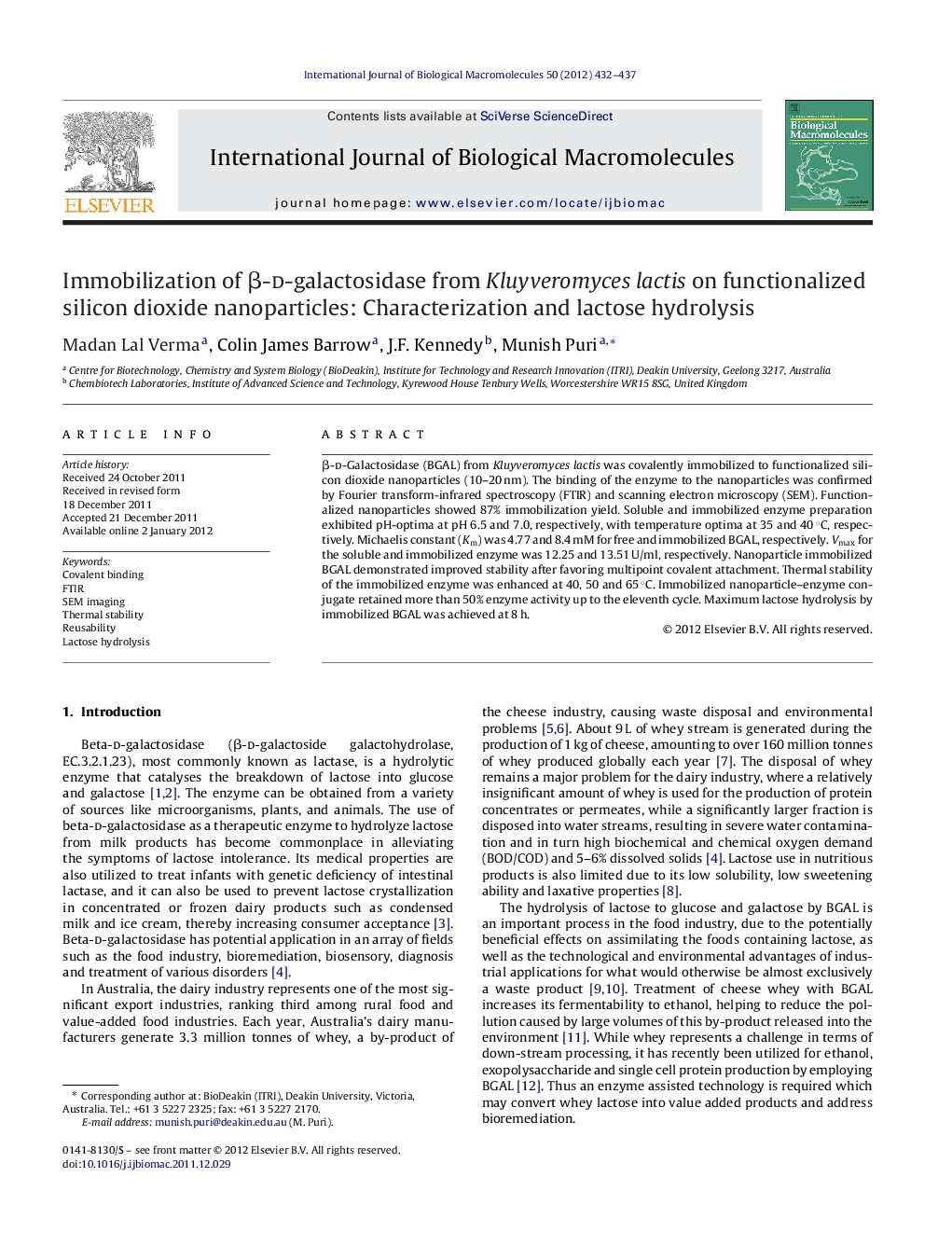| Article ID | Journal | Published Year | Pages | File Type |
|---|---|---|---|---|
| 8334925 | International Journal of Biological Macromolecules | 2012 | 6 Pages |
Abstract
β-d-Galactosidase (BGAL) from Kluyveromyces lactis was covalently immobilized to functionalized silicon dioxide nanoparticles (10-20 nm). The binding of the enzyme to the nanoparticles was confirmed by Fourier transform-infrared spectroscopy (FTIR) and scanning electron microscopy (SEM). Functionalized nanoparticles showed 87% immobilization yield. Soluble and immobilized enzyme preparation exhibited pH-optima at pH 6.5 and 7.0, respectively, with temperature optima at 35 and 40 °C, respectively. Michaelis constant (Km) was 4.77 and 8.4 mM for free and immobilized BGAL, respectively. Vmax for the soluble and immobilized enzyme was 12.25 and 13.51 U/ml, respectively. Nanoparticle immobilized BGAL demonstrated improved stability after favoring multipoint covalent attachment. Thermal stability of the immobilized enzyme was enhanced at 40, 50 and 65 °C. Immobilized nanoparticle-enzyme conjugate retained more than 50% enzyme activity up to the eleventh cycle. Maximum lactose hydrolysis by immobilized BGAL was achieved at 8 h.
Related Topics
Life Sciences
Biochemistry, Genetics and Molecular Biology
Biochemistry
Authors
Madan Lal Verma, Colin James Barrow, J.F. Kennedy, Munish Puri,
